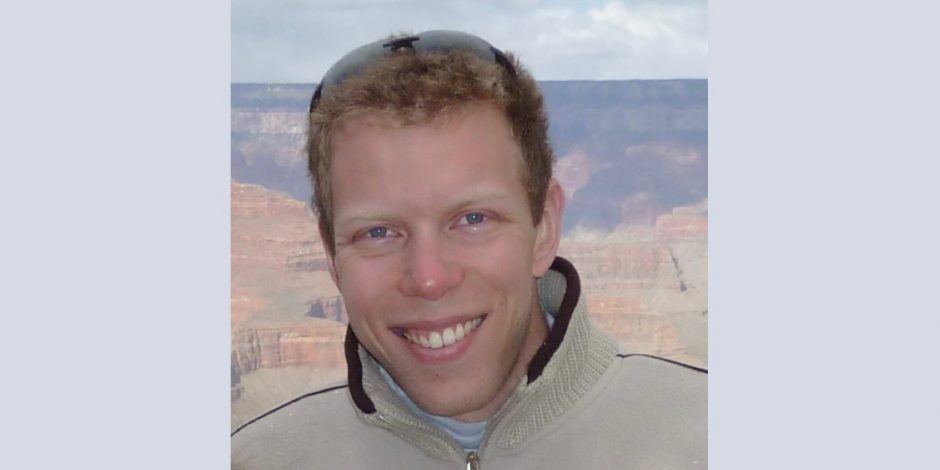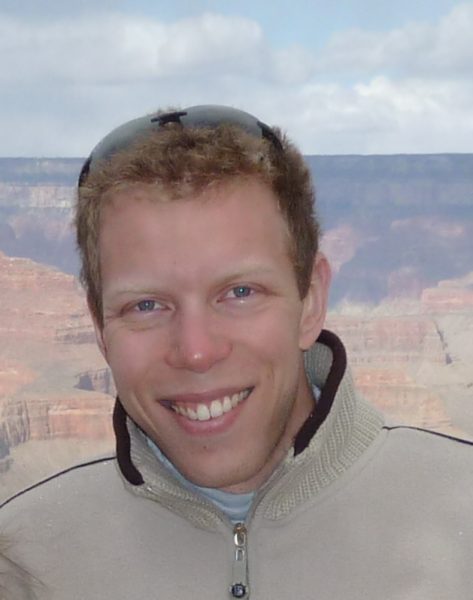«Our telescope in Mexico is really filling a gap»

Brice-Olivier Demory is looking for earth-sized, potentially habitable exoplanets. Part of his research strategy is building a telescope in Mexico. Since August 2016, the 36 year old astronomer has been professor at the Center for Space and Habitability (CSH) of the University of Bern. His professorship is sponsored by the Swiss National Science Foundation (SNSF). Demory has also won both the Royal Society University Research Fellowship (2016) and the Ernest Rutherford Fellowship (2016) of the U.K. He grew up in Geneva, is married and has a two year old daughter.

Brice-Olivier Demory is SNSF Professor at the University of Bern. (Image zVg)
PlanetS: After your PhD at the Observatory of Geneva you worked at MIT in Boston and at the University of Cambridge, UK. Why did you return to Switzerland?
Brice-Olivier Demory: I came to Bern because there are a lot of brilliant theorists in the institute and as an observer I wanted to foster collaboration with them. As a postdoc I was very disappointed that observers were always together with observers, and theorists were with theorists. But looking at a problem from different standpoints helps a lot and can bring new ideas.
In March 2016, you made headlines with a map of a rocky exoplanet that revealed a lava world. What are your topics now?
I am basically working on ultra-cool stars – objects like our next neighbour Proxima or Trappist-1. I am trying to look for planets around them. This is very interesting because these stars are cold and small, meaning that you can detect earth-sized planets with temperate condition at their surface. Maybe water could be common. This is also the topic of my SNSF professorship – to focus on this kind of objects because they represent the fast track to detect earth-like worlds and to characterize them.
You will build a telescope in Mexico. What is its purpose?
The telescope is designed to look for earth-sized, potentially habitable planets orbiting ultra-cool stars. We want to detect these planets and then characterize their atmosphere with the James Webb Space Telescope, which is the successor of Hubble. The telescope in Mexico is part of this strategy. It is a 1 Meter telescope that will cost 1.3 million Swiss francs. 80% of the funding comes from Switzerland, 20% from the UK. Another selling point is that it is completely robotic. There won’t be any human being in the telescope dome.
Aren’t there other telescopes that could do the same job?
So far, in the northern hemisphere there are no facilities at all able to carry out this science. So our telescope called SAINT-EX is really filling a gap. SAINT-EX means «Search and chAracterisatIoN of Transiting EXoplanets» and is named after the author of the Little Prince, Antoine de Saint-Exupéry. It comes to no surprise that we received a request from our colleagues working on the NASA TESS mission asking for support from our telescope to examine the targets that will be found by TESS. But SAINT-EX will also prescreen the target list of the Swiss space telescope CHEOPS. Of course our telescope in Mexico won’t have the same precision as CHEOPS, but it will allow to optimize the scientific use of CHEOPS and not waste time that could be used elsewhere.
Why did you choose San Pedro Martir in Baja California as the site?
It is an excellent site with about the same meteorological conditions as Mauna Kea on Hawaii. Of course it is lower in altitude, so the atmospheric transparency is not as good and the humidity is a bit higher compared to Hawaii, but it perfectly fits our requirements, so it was the site of choice.
The other reason is that we are quite offset from the other European observatories like la Palma. We can benefit from this difference in longitude, because when the sun rises on the Canary Islands it is still night in Mexico and we can continue observing stars that are not visible from Europe any more.
Did you always want to become an astronomer?
As a kid, I had two passions in life, astronomy and aviation. When I was in Munich for my bachelor studies, I applied to Lufthansa to become a pilot but then decided to finish my studies. A few years later, an assessment at British Airways showed me that today’s job of a pilot is not the one that I have pictured in my childhood dreams. But I do keep aviation as a hobby. I like flying because it’s quite demanding in terms of concentration. When I fly I don’t think of anything else. In the air, worries are gone until touchdown. Still, there are many similarities with my day job. The planning preceding each flight closely resembles the preparation of an observing night at the telescope.
Back to telescopes: When will astronomers find an Earth twin?
It depends on what we call a twin. If it is a planet with the size and the mass of the Earth then we have already detected some earth twins. If earth-like means a planet with continents, oceans, and living species on the surface, then we are not there yet. I think this could happen within a decade. I am very optimistic that the upcoming telescopes and the E-ELT will be able to discover the places. So we need the proper targets to allow us actually to detect signatures in the atmospheres of these planets to detect life.
Do you exactly know what you have to look for?
We don’t have any theoretical framework of life. We are struggling to define life and the good solution to this central question would be to observe life in other planetary systems. This would allow us to better understand our own origin. I think that is one of the big goals in astronomy.
We know that the planets that we are looking for now, these small planets orbiting cold stars, were born and have evolved in a different environment than our Earth. It is really difficult to picture what life would look like there. The most tragic scenario in the search for life would be to detect it but failing to notice it. That is something that haunts me days and nights! So far, we don’t have a good understanding of what to look for. So let’s go, let’s try what ever we can. Let’s accumulate all evidence. I think here in Bern we have the expertise needed for this task.

